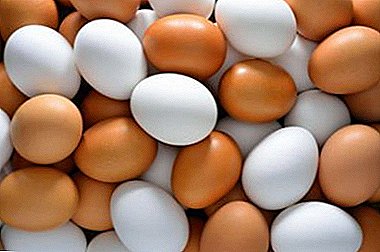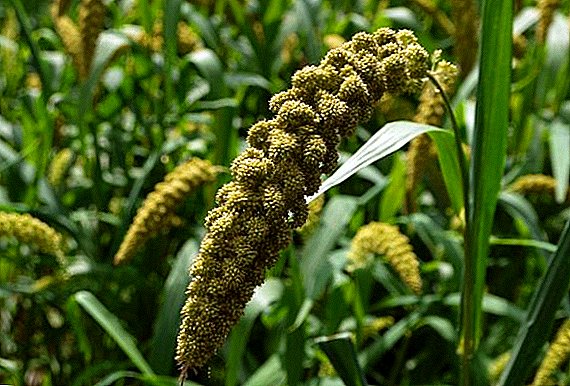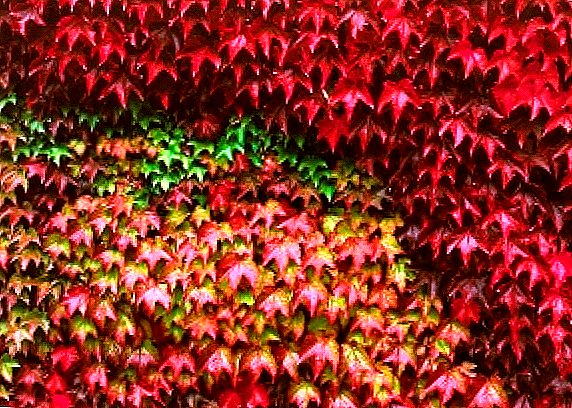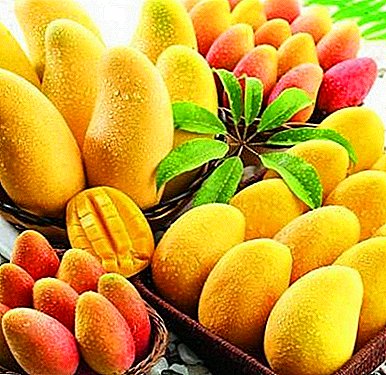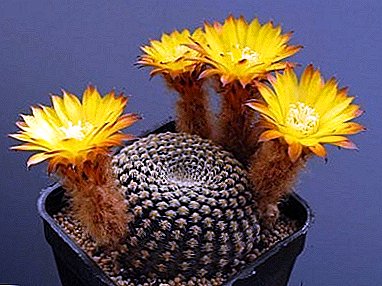
Lobivia or in Latin Lobivia - is a representative of the family of cacti, already more than 100 years grown in indoor floriculture.
Its genus is very extensive and according to various sources it has from 70 to 140 speciesgrowing in Peru, Bolivia and Argentina.
Lobivia is the closest relative of the Echinopsis cactus. It is no coincidence that in separate reference books many of its types are classified as forms of this kind.
The form is classic cactus with spherical or cylindrical stem. The ribs of most of its species are rounded. Most often they are divided into segments, on the hillocks of which areolae are located with bundles of thin and flexible spines.
Lobivia forms a large number of basal processes, creating around itself a whole colony of "children" and thereby multiplying. For two or three seasons, she and her family can inhabit all the free space in the pot.
Blooms funnel-shaped with multilobe flowers yellow, white, red, pink, carmine color.
Numerous stamens on thin shiny threads give them a special charm. Through the efforts of breeders, a wide variety of varieties have been developed. "barb beauty" with original color palette.
 Lobivia refers to desert cacti. Among them you can find a lot of interesting specimens, which, among other things, can be grown in the conditions of an apartment.
Lobivia refers to desert cacti. Among them you can find a lot of interesting specimens, which, among other things, can be grown in the conditions of an apartment.Read detailed materials about such of them: Ailoster, Cereus and Parody.
Kinds
Bakebergaotherwise, Lobivia backebergii is a dwarf species with a grayish surface, the diameter of which does not exceed 5 cm, and beautiful cream flowers. The maximum number of ribs is 15, and the length of its irregular spines is from 0.5 to 5 cm.

Lobivia backebergii
Crucible, in Latin, Lobivia tiegeliana is a spherical variety with flat wide ribs, the number of which is 18, and the diameter is 6 cm. The areola carry up to 20 needles no more than 1 cm in length. Differs reddish-purple range of small flowers.

Lobivia tiegeliana
Bolivianotherwise, Lobivia boliviensis is a cylindrical shape of a grayish-green color, about 10 cm high with long interlacing spines. The diameter of bright pink with a cream center buds - 4 cm.

Lobivia boliviensis
Denspisin or Lobivia densispina - a species consisting of a number of cacti, differing in size and shape of stems, thorns, and color of flowers, which are characterized by large size and bright colors.

Lobivia densispina
Zhazhoyana or Yayoana, otherwise Lobivia jajoiana is a small species with a spherical stem with a circumference of no more than 10 cm. It is distinguished by strongly pronounced areola tubercles. The length of the reddish-white radial needles from 0.8 to 1 cmand brown central - 2-2.5 cm. Goblet flowers are very beautiful - yellow or fiery red with a purple center and numerous contrast stamens.

Lobivia jajoiana
Golden yellow or Lobivia aurea - a cylindrical stem with long tubular flowers of golden-yellow color on pubescent silvery pedicels.

Lobivia aurea
Cinnabar Redin Latin, Lobivia cinnabarina is a slightly flattened spherical stem about 15 cm in circumference with very showy carmine flowers. Brown needles are quite tough and reach 8 cm in length.

Lobivia cinnabarina
Spider web (spiderweb), otherwise Lobivia arachnacantha is a miniature round shape with a circumference of only 4 cm with the tip pressed inward. The flowers are painted in yellow-orange shades with a glossy shine.

Lobivia arachnacantha
White-violetotherwise, Lobivia leucoviolacea is an interesting species, slightly elongated and spherical. Long light needles almost cover the surface. Color of flowers pink with a violet shade.

Lobivia leucoviolacea
Famatymskaya, in Latin Lobivia famatimensis - this cylindrical shape is characterized by a set of sharp edges in the amount of up to 24 pieces. Short spines strongly pressed to the ribs and almost imperceptible. The flowers of a bright yellow shade have a diameter of about 6 cm.

Lobivia famatimensis
Hertician or Hertrich, otherwise Lobivia hertrichiana - a small spherical view, which is located on 11 flat ribs. The size of the radial spines is 1.5 cm, and the central needle is the longest and only one. It is yellowish in color, and its size is 2.5 cm. The red flowers are decorated with a bright center.

Lobivia hertrichiana
Pentland, in Latin Lobivia pentlandii - slightly elongated spherical shape. Needles most often absent. The length of the tubular red or bright orange buds is about 6 cm. The scaly pedicle is covered with short down.

Lobivia pentlandii
Reita (Haage)otherwise, Lobivia haageana is a large cylindrical cactus with a bluish stem reaching 30 cm in height. The length of the dark brown radial needles is 2-3 cm, and the central ones are 6-7 cm. The tubular flowers are light yellow with a dark center.

Lobivia haageana
Schreiter, in Latin, Lobivia schreiteri - is distinguished by a stem consisting of a set of "baby heads" with a diameter of not more than 3 cm, covered with small whitish spines. The color of small flowers is red with a dark throat.

Lobivia schreiteri
Home care
Lobivia unpretentious care, sun-loving and enduring. The hardest thing in growing Lobie is to provide her with conditions for flowering.
To do this, it is important to strictly observe the temperature, maintain sufficient illumination and properly water.
 Do you know that such a cactus as Opuntia is interesting not only for its appearance, but also brings considerable benefits to humans?
Do you know that such a cactus as Opuntia is interesting not only for its appearance, but also brings considerable benefits to humans?Read about it on our website. Also find out what types of Opuntia exist and how to properly care for this amazing plant.
Lighting
Lobivia is a big lover of sunlight.
The ideal option for its placement can only be the southern windowsill.
With poor lighting, the stem is deformed, and the needles fall. The room must be regularly ventilated - a native of highland areas needs a constant flow of fresh air.
Temperature
 She is beautiful tolerates the summer temperature of Russian latitudes. However, at the same time, a resident of the mountains needs to vary in day and night temperatures.
She is beautiful tolerates the summer temperature of Russian latitudes. However, at the same time, a resident of the mountains needs to vary in day and night temperatures.
Therefore, in the warm season, it is best to transfer it to the veranda or balcony, or prikopat together with a pot in the garden in a place protected from rain.
In winter, the cactus comes a period of rest. In late November, he is transferred to the premises with temperature from 8 to 10 ° C.
Without a cool wintering, Lobivia will refuse to bloom, because it is the coolness that contributes to the establishment of flower buds.
Watering and humidity
Water the plant should be carefully, waiting for the soil to dry in a pot. It is important not to fill it.
Moisture stagnation is detrimental for him and can lead to stem decay.
Watering begins in the spring, after the flower buds appear.
In mid-July, watering stops for a month, and then resumes in the second half of August.
In late numbers November watering stop completely and transferred to a cool place to winter.
Lobivia has an undeniable dignity - it is not demanding of moisture, fine carries dry air premises and does not need spraying. It is only necessary to periodically clean it from dust using a small spray.
Fertilizers
It is recommended to feed twice a month with fertilizer for cacti from March to September during active growth and flowering.
During the rest period fertilize it is not desirable.
Bloom
 In the spring at the end of wintering in lobivii begin laying flower buds.
In the spring at the end of wintering in lobivii begin laying flower buds.
At this time, you need to carefully monitor it and when the buds appear, immediately transfer it to a bright room and resume watering.
The plant begins to bloom in May. Each flower lives from 1 to 3 days. Interestingly, at dawn, it dissolves, and closes in the evening.
Sometimes simultaneously appears up to 25 flowersthat is an extraordinary sight.
Transplantation and soil composition
Lobivia needs a loose, permeable soil with a neutral acidity pH of 5.6. You can buy ready-made mixture for cacti or prepare the soil yourself.
To do this, take:
- 4 pieces of fertile sod land;
- 3 parts of leafy ground and coarse sand;
- 2 parts peat.
Transplanted annually in a larger and wide pot with drainage holes and a sufficient layer of pebbles at the bottom.
IMPORTANT: cactus is transplanted from dry to dry soil.
After transplantation, it is placed in a dark place for several days, and it can be watered only after a week.
Features care after purchase
 Most often, Lobivia enters our house from a flower shop.
Most often, Lobivia enters our house from a flower shop.
That she successfully mastered the new conditions must be transplanted into fresh land, having preliminarily examined for possible pests and diseases.
However, replanting is not recommended immediately. It is desirable that after purchase he spent ten days in quarantine.
During this time, the ground in the pot will dry out well and lobelia adapts to new conditions.
When transplanting, you must carefully shake the cactus out of the pot, examine it and find out if the pests have settled on it. Dry and damaged roots should be cut off.
If the stem is affected by damage, you need to cut off the affected place and sprinkle the wound with activated charcoal.
Then you can buy Lobivia in hot water with a temperature of about 50 ° C with the addition of fungicide and insecticide.
This procedure is an excellent pest prevention. In addition, it activates the growth of the plant. After warming up, cactus should be dried. within 3 or 4 daysby placing it in a vertical position and straightening the roots.
After the plant dries, you need transplant it into a new ground and provide it with all the necessary conditionsdescribed above.
Breeding
 "Kids". The first method is the easiest, but it is better to use it infrequently, alternately with seed propagation.
"Kids". The first method is the easiest, but it is better to use it infrequently, alternately with seed propagation.
Otherwise, the cactus quickly degenerates from the constant separation of the lateral shoots.
In the spring or early summer, separate the "baby", give the place of breaking or cutting a little dry and strengthen the cutting in wet sand or soil.
If you pre-sharpen the cut like a pencil, the survival rate will increase. For breeding it is recommended to choose a healthy side shoot with a hard, like a glass surface.
Seeds. For better germination, it does not hurt to soak the seeds in warm water for a day before sowing, in which several crystals of potassium permanganate are dissolved. Then they should dry out.
Seeds are sown by the surface method. - should be evenly distributed on lightly compacted earth, moistened with a spray gun and cover with glass or a transparent bag.
 Not only Lobivia can be propagated by seed. In the same way, you can breed other types of cacti.
Not only Lobivia can be propagated by seed. In the same way, you can breed other types of cacti.Read about it in our articles about Ferocactus, Mammily and Rebution.
Diseases and pests
Dangerous enemies of Lobivia are:
- spider mite;
- mealybug;
- shield;
- aphid.
If the plant suffers from too dry air, a spider mite can attack it. He finds himself brown spots on the stem and cobwebs.
Chemical agents such as "Fitoverm", "Neoron" or "Agrivertin", or natural - decoction of yarrow, infusion of onion or garlic.
The shield or scarlet is removed with a brush, after which the plant is soaped for a couple of hours and then rinsed.
If a attacked aphid, you need to destroy the insects and wash the cactus with soap, and in the case of mass infection drugs will help: "Actellic", "Fitoverm", "Spark".
In case of excessive watering, it may suffer from stem rotwhich is expressed by the stained and wrinkled cactus.
It is necessary to cut the sore part, process the cut with coal or fungicide and for a couple of weeks practically do not water the plant.
You can also separate the healthy top of the cactus and root it.
As we see, lobivia is a cactus charming in its modesty and unpretentiousness, which is not at all difficult to “persuade” to bloom.
Try to settle on your windowsill this "prickly friend" - and it will delight and amaze you for a long, long time.





